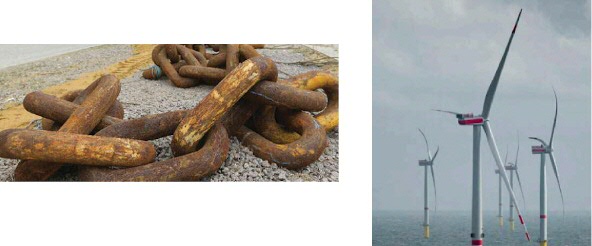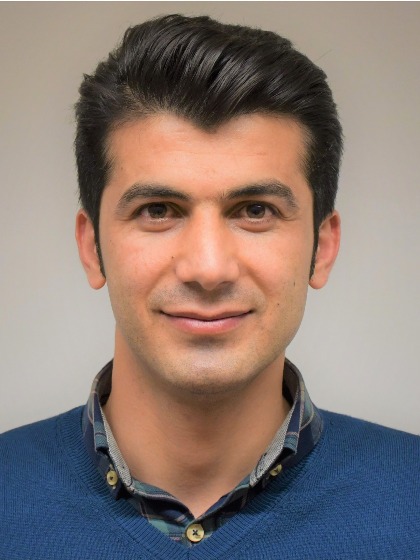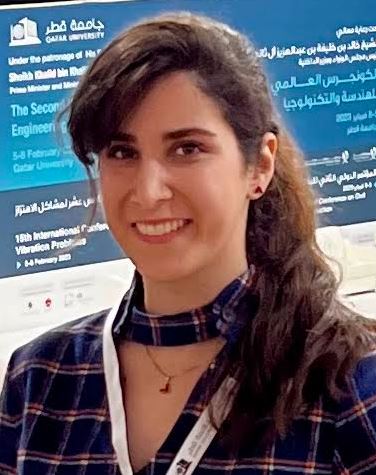Dynamics and Vibration
The Group is engaged in leading-edge research in fundamentals of vibration, passive and active vibration control, energy harvesting and nonlinear dynamics. The main aim of the group’s research is to provide better predictability of the dynamic behaviour of engineering structures to ensure better performance, safer operations and lower maintenance costs for existing and future designs.
Our research often involves the parallel use of experiments and simulation. Experiments are used to provide fundamental insight into vibration behavior of engineering structures and enable validation of theoretical results.
|
Chair
|
|
|
Secretary
|
|
|
Postal address
|
DV group, ENTEG
University of Groningen Nijenborgh 4 9747 AG Groningen The Netherlands |
|
Email (secretariate)
|
o.guseva@rug.nl
|
Research Staff
PhD students
Support Staff

Main research topics include:
Structural Modification
One of our important research areas is in suppressing undesirable vibrations in structures. Many engineering structures are subjected to resonances, which is produced by some external loads interacting with the structure. Resonances can occur in cable-stayed bridges, inwindmills and in ships. Millennium bridge is an example in which pedestrians experienced an alarming swaying motion on its opening day. The bridge was closed for almost two years so that structural modifications could be made to keep the bridge stable.
Passive approaches such as vibration isolators and tuned-mass dampers, have been widely used in engineering structures to control vibrations. Passive modification is to use structural elements in order to modify the mass, stiffness and damping characteristics of the structure.

Active Vibration Control
Active vibration control has the potential to control large amplitudes of vibration and modify the dynamics of the system very efficiently. In active vibration control, sensors , actuators, and controllers are used in order to generate a secondary force to cancel the vibrations from the external disturbances. Both feedback and feedforward control strategies are considered for active control.
Energy Harvesting
One of the aim of our research is to harvest energy from ambient vibration and moving structures. With the elevated concerns on the global energy and environmental issues, harvesting energy from the vibrations has become more attractive. Electromagnetic generators are mainly used to harvest energy from large scale vibrations such as tall buildings, vehicle systems and ocean waves.


Nonlinear Dynamics and Control
Another important research topic that we investigate is in nonlinear dynamics and control. Nonlinear systems have been encountered in almost all engineering sectors. Some examples of nonlinear behaviour are in flexible structures with large deformations such as turbine blades, cable-stayed bridges, machine and drilling tools with stick-slip motion. Although in some applications nonlinear behaviour is destructive and it may cause effects such as instability, in other applications, nonlinear behaviour is so crucial that without nonlinearities, the system may malfunction. One interesting example of nonlinearity is the saturation of the active mechanism in cochlea, which allows us to have an increased dynamic range of hearing. Other examples of the positive influence of nonlinearities are in musical instruments, such as the stick-slip phenomenon as the sound generation mechanism in violins, and the sound generated by musical gongs. Gongs typically have geometric nonlinearities, so that when they are struck, the input energy initially excites the lower modes of vibration and then the energy is transferred to higher frequencies, giving the characteristic rising note of the instrument.
Time-varying systems and Control
Active control of parametrically excited systems is another interesting research topic that our group is involved. We have demonstrated that parametric resonance can even exist in relatively simple structures. For high levels of input excitation, the two parametrically excited beams exhibit limit-cycle oscillation. These time-varying dynamics must be accounted for, in the design of the control system, in order to ensure effective vibration control.

picture: Two parametrically excited systems with time-varying stiffness: (a) an electromagnetic beam using a pair of magnets and coils, with an AC current to the coils, (b) a beam subject to an axial harmonic load,(c) limit-cycle behaviour of the beam subject to the axial load.
Health Monitoring
Structural Health Monitoring (SHM) is the in-service monitoring of structural performance and damage assessment. The group has recently been interested in the application of SHM to offshore engineering for example in mooring chains, turbine blades and flexible risers.

| Last modified: | 17 April 2024 3.04 p.m. |









